The folding chair is a staple of modern life—versatile, practical, and found in settings ranging from weddings to offices to outdoor concerts. But have you ever stopped to wonder who invented the folding chair? Or just how this simple design became essential to our daily lives?
This post takes you on a historical journey through the creation and evolution of the folding chair, revealing details about its origins and role in various cultures and industries. If you’re a history buff, an event planner constantly setting up chairs and tables, or a furniture enthusiast, you’ll appreciate this deep dive into one of humankind’s most functional inventions.
The Origins of the Folding Chair
Folding chairs might seem like a modern-day innovation, but their roots trace back thousands of years! These humble yet ingenious pieces of furniture are a testament to human problem-solving and creativity.
Ancient Beginnings

Folding chairs were not conceived in the boardrooms of the 20th century but had a timeline that far predates modern civilization. Archaeological evidence reveals that the Egyptians first used folding chairs over 4,000 years ago. These early designs, made from wood or metal, were functional yet highly artistic, often featuring intricate carvings and inlaid jewels, symbolizing status and authority.
The Greeks and Romans later adopted the concept, creating versions of the folding chair to suit their needs. Roman folding chairs, known as “curule chairs,” were commonly used by magistrates and high-ranking officials as a sign of power. These chairs were portable, luxurious, and made from ivory, bronze, or richly decorated wood.
The Folding Chair’s Comeback in the Medieval Era
After the fall of the Roman Empire, the popularity of folding chairs waned but never entirely disappeared. During the European Medieval period, folding chairs resurfaced in ecclesiastical and royal settings. The “X-frame” was a standard design used in cathedrals for bishops and other high-ranking clergy. Like their ancient counterparts, these chairs remained symbols of power and exclusivity.
The Modern Folding Chair Is Born
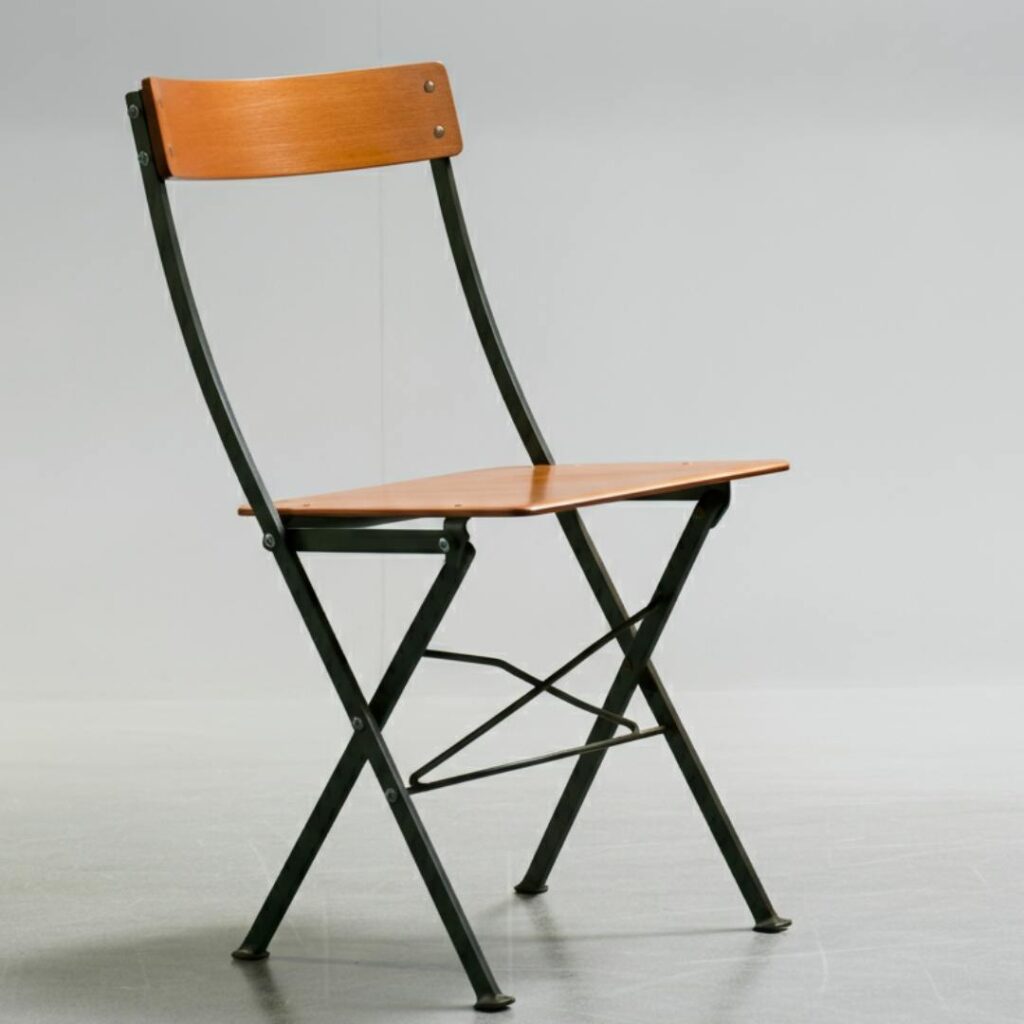
Fast-forward a few centuries to the late 19th and early 20th centuries, the folding chair began to evolve into the valuable furniture we know today. It was no longer just reserved for the elite; instead, it was redesigned for the masses.
Hans Knoll and the Modern Twist
The early 20th century saw yet another wave of innovation for folding chairs. Scandinavian designer Hans Knoll and his design firm Knoll Inc. are often credited with modernizing the folding chair during the mid-1900s. His influences stemmed from the Bauhaus movement, emphasizing function and clean forms. These sleek designs were trendy in post-war America, filling living rooms, offices, and public venues.
Folding Chairs Across Industries
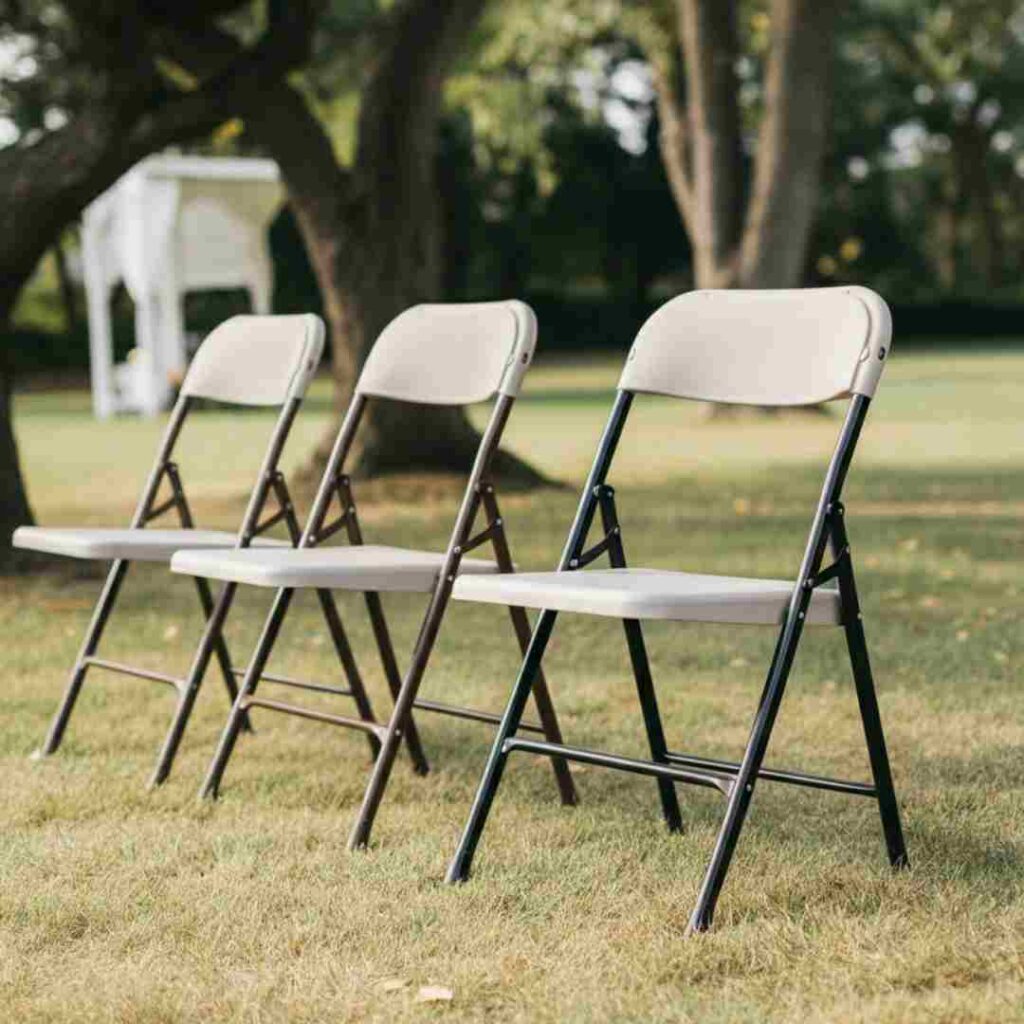
The folding chair transcends its primary function of offering a place to sit. Today, event planners, outdoor enthusiasts, office workers, and even artists rely on it for various reasons.
For Event Planners
Think about weddings, conferences, or charity galas. The folding chair has become the unsung hero of the event planning industry. Lightweight, stackable, and available in countless styles—from plastic basics to plush-covered luxury models—these chairs often shape the ambiance of a big event.
For Outdoor Enthusiasts
Campers and outdoor lovers owe their comfort to folding chairs. Modern iterations feature collapsible aluminum frames and waterproof fabric, offering portability without sacrificing stability. These chairs make outdoor concerts, fishing trips, and hiking rest stops far more enjoyable.
Office and Home Use
Have you attended a school recital or a work seminar lately? Chances are, you’ve sat on a folding chair. Foldable office chairs have also gained traction, especially with minimalist or space-saving designs becoming popular in smaller living environments.
The Folding Chair in Pop Culture and Everyday Life
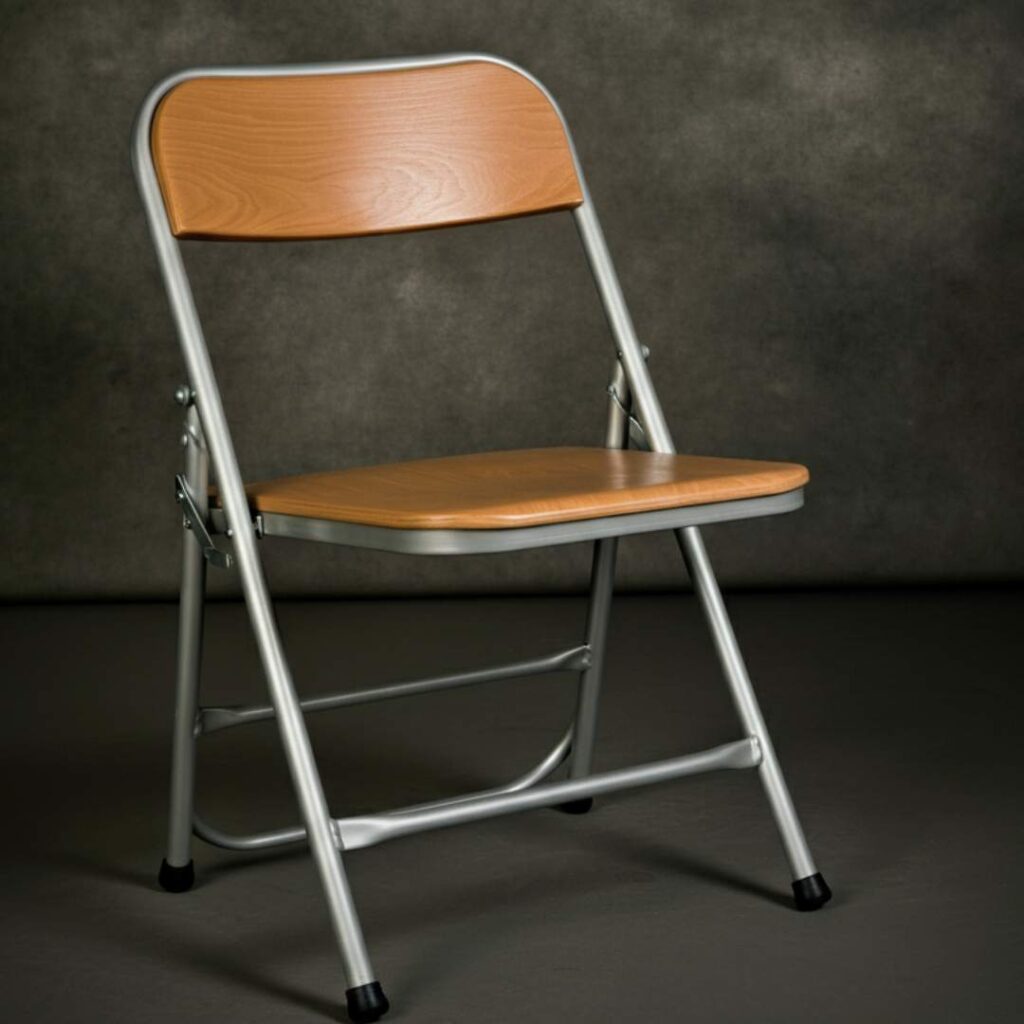
Beyond its practical use, the folding chair has gained a cult following in pop culture. From its meme-worthy appearances in WWE wrestling matches to its use as everyday furniture in sitcoms and films, the folding chair has proved its versatility in entertainment.
Additionally, folding chairs have held cultural relevance in moments of protest and justice. A now-iconic photograph from the civil rights movement captures activists seated defiantly on folding chairs during sit-ins at segregated lunch counters.
A Sustainable Contribution
Another lesser-known yet significant advantage of folding chairs is their environmental impact. These chairs are often made from recyclable materials, including aluminum and polypropylene. Many designs also use responsibly sourced wood, making them more eco-friendly than some traditional furniture options. The ability to reuse these chairs across different venues and occasions further adds to their sustainability.
What the Future Holds for Folding Chairs
The evolution of folding chairs continues, with manufacturers integrating advanced technology like ergonomic designs, durable composite materials, and even intelligent features such as built-in USB chargers or solar panels for outdoor usage. For furniture enthusiasts, it’s exciting to imagine what innovations might come next for this age-old invention.
Take a Seat in History
From ancient Egyptian royalty to modern-day event planners, folding chairs have served humanity in countless ways. Their ability to adapt to various eras, cultures, and industries ensures they will remain a staple in our lives for years. Every time you unfold one, you participate in a centuries-old tradition of practicality meeting ingenuity.
Are you a fan of furniture history? Do you love learning about innovative, functional designs? Please share your thoughts in the comments below and tell us how you use folding chairs!
Who Invented The Folding Chair?
Many names are associated with the creation of folding chairs. However, credit for this invention goes to four individuals from different historical periods. Their combined labor created the blueprint for our modern folding chairs.
Read on to discover the answers to the questions, “Who invented folding chairs?” and “When were folding chairs invented.”
John Cram
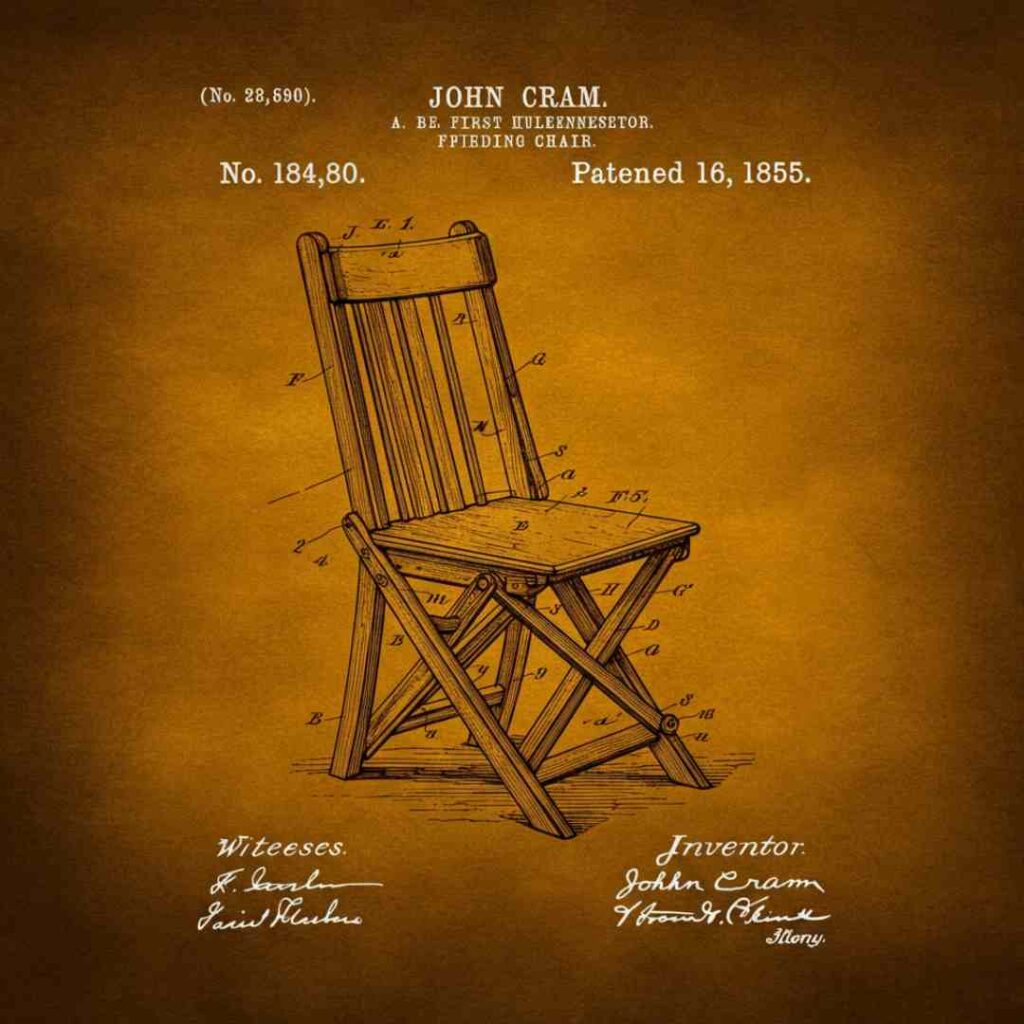
John Cram is arguably the first folding chair inventor (although there are a few other names). In 1855, he created an armless chair that resembles the modern folding chair. In his patent filings, John Cram mentions an earlier patent by J. Middleton. Unfortunately, there are no records of any patent before the year 1855. There is no evidence to show the related work of an inventor by that name. Cram’s patent is recognized globally as the earliest patent related to the history of the folding chair. After John, numerous patents for other folding chairs were filed. These patents feature various styles and modifications to the folding chair.
Nathaniel Alexander

If someday, someone suddenly asks you: Who invented the folding chair, and when was the folding chair invented? What will be your response? You’ll respond with Nathaniel Alexander in 1911.
Nathaniel is by far the most popular among all the folding chair inventors. And for a good reason. The Nathaniel Alexander folding chair uses Cram’s design as a template for a superior version. This version is more convenient and valuable. In his patent, Alexander states that his creation will be used in churches and other auditoriums. His design includes a thinner chair with arms and a noticeable backrest. This backrest functions as a desk or shelf for the person behind it. The Nathaniel Alexander folding chair has features that are suitable for churches. It is convenient for the choir and congregation to rest their music sheets and prayer books.
Philip E.G., Harrison
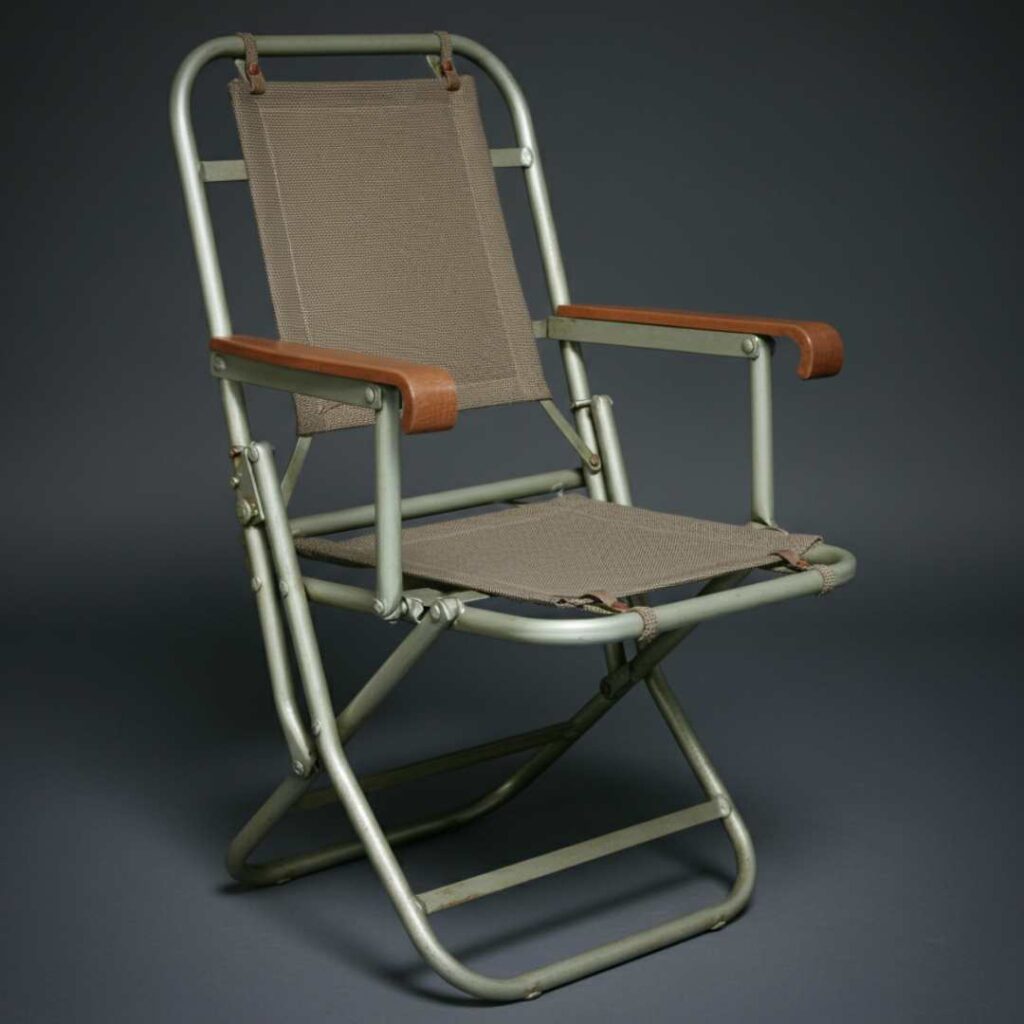
In 1931, Philip Harrison created what we know today as the party chair. Harrison’s design is very similar to today’s modern folding chairs. It features a metal frame, fabric seat, back, and pivot, making the chair foldable. Like every great invention, this new folding chair had a drawback. Although ingenious, Harrison’s design was complex and, therefore, not suitable for mass production.
This problem would plague the furniture industry for many years until Frederic Arnold improved the design.
Fredric Arnold

Several years after Philip Harrison is Arnold, who enters the fray and makes the folding chair into a much simpler structure. Fredric Arnold’s folding chair features a fabric seat and an aluminum frame. Compared to the others, this design is relatively simple. But this simplicity carved the path for a new era and made mass production possible.
Since then, the world hasn’t witnessed any significant change in the folding chair. Designers strive to retain the traditional structure while creating folding chairs that are as functional as ever. Schools, churches, parties, and significant events hosting numerous people are places where folding chairs reign supreme. Although they all maintain the same basic structure, folding chairs come in various unique styles and shapes. Additionally, folding chairs are versatile and made from plastic, wood, and metal. The possibilities are endless!
Conclusion
Folding chairs have an undeniably rich history and continue to adapt to modern needs with remarkable versatility. From the grandeur of Roman curule chairs to the minimalist designs of today, these seats have traversed time as symbols of power, innovation, and practicality. In contemporary society, they offer convenient solutions across various fields, from elegant event settings to outdoor adventures, office dynamics, and beyond. As we move toward a future where sustainability and technology play increasingly significant roles, the folding chair’s potential for advancement holds exciting possibilities. Their enduring presence in our lives is a testament to their timeless utility and innovative spirit, proving they are much more than mere pieces of furniture.





